Negativní následky chemoterapie či ozáření
Mezi nepříjemné vedlejší účinky dvou nejběžnějších způsobů léčby rakoviny, tj. chemoterapie a ozařování, patří zejména poškození kostní dřeně a s tím související těžká leukopenie a s ní spojené poruchy imunitního systému. Beta glukany byly právě pro tyto případy zkoušeny již před padesáti lety, tehdy se jednalo především o armádou financované výzkumy pro případ atomové války.
Leukopenie do značné míry limituje dávku a délku léčby chemoterapeutiky. Této problematice se nejvíce věnovala skupina vedená M. Patchenovou, která na nejrůznějších zvířatech testovala, jestli glukan (ať už podávaný profylakticky nebo jako léčba) pomůže limitovat nástup a průběh leukopenie nebo alespoň její následky zmírnit. Ukázalo se, že bez ohledu na indukci leukopenie, tj. ozáření nebo typu chemoterapeutické látky (5-fluorouracil, cyclosphophamid atd.), podávání glukanu vedlo k výraznému zrychlení návratu počtu leukocytů na normální hladiny, a to ve všech sledovaných orgánech (Patchen and Mac Vittie, 1985 a,b).
Naše vlastní výsledky později tyto nálezy potvrdily a dále ukázaly, že je jedno, jestli je glukan používán v potravě nebo v injekční formě (Vetvicka et al., 2007). Tyto účinky glukanu jsou pravděpodobně způsobeny receptorem CR3, který je vazbou glukanu aktivován a následně aktivuje hematopoietické progenitorové buňky (Cramer et al., 2005).
Citace:
- Patchen M.L, MacVittie T.J. Dose-dependent responses of murine pluripotent stem cells and myeloid and erythroid progenitor cells following administration of the immunomodulating agent glucan. Immunopharmacol 1983;5:303-313.a
- Patchen M.L, MacVittie T.J. Stimulated hemopoiesis and enhanced survival following glucan treatment insublethally and lethally irradiated mice. Int J Immunopharmacol 1985;7:923-932.b
- Vetvicka V, Dvorak M, Vetvickova J, Richter J, Krizan J, Sima P, Yvin J.C. Orally - administered marine β1,3 glucan Phycarine stimulates both humoral and cellular immunity. Int J Biol Macromol 2007;40:291-298.
- Cramer, D.E., Allendorf, D.J., Baran, J.T. Hansen, R., Marroquin, J., Li, B., Ratajczak, J., Ratajczak, M.Z., Yan, J.: Beta-glucan enhances complement-mediated hematopoietic recovery after bone marrow injury. Blood 107: 835-840, 2005.
Důležité abstrakty:
It has generally been accepted that most biologically derived agents that are radioprotective in the hemopoietic-syndrome dose range (eg, endotoxin, Bacillus Calmette Guerin, Corynebacterium parvum, etc) exert their beneficial properties by enhancing hemopoietic recovery and hence, by regenerating the host`s ability to resist life-threatening opportunistic infections. However, using glucan as a hemopoietic stimulant/radioprotectant, we have demonstrated that host resistance to opportunistic infection is enhanced in these mice even prior to the detection of significant hemopoietic regeneration. This early enhanced resistance to microbial invasion in glucan-treated irradiated mice could be correlated with enhanced and/or prolonged macrophage (but not granulocyte) function. These results suggest that early after irradiation glucan may mediate its radioprotection by enhancing resistance to microbial invasion via mechanisms not necessarily predicated on hemopoietic recovery. In addition, preliminary evidence suggests that glucan can also function as an effective free-radical scavenger. Because macrophages have been shown to selectively phagocytize and sequester glucan, the possibility that these specific cells may be protected by virtue of glucan`s scavenging ability is also suggested.
Patchen, M.L., D’Alesandro, M.M., Brook, I., Blakely, W.F., MacVittie, T.J.: Glucan: Mechanisms involved in its “radioprotective effects”. J. Leukocyte Biol., 42: 95- 105, 1987.
Myelotoxic injury in the bone marrow (BM) as a consequence of total body irradiation (TBI) or granulocyte colony stimulating factor (G-CSF) mobilization results in the deposition of iC3b on BM stroma (stroma-iC3b). In the present study, we have examined how stroma-iC3b interacts with hematopoietic progenitor cells (HPC) and the role of complement (C) and complement receptor 3 (CR3) in BM injury/repair. We demonstrate here that stroma-iC3b tethers HPC via the inserted (I)-domain of HPC complement receptor 3 (CR3, CD11b/CD18, Mac-1). Following irradiation, stroma-iC3b was observed in the presence of purified IgM and normal mouse serum (NMS), but not serum from Rag-2(-/-) mice, implicating a role for antibody (Ab) and the classical pathway of C activation. Furthermore, a novel role for soluble yeast beta-glucan, a ligand for the CR3 lectin-like domain (LLD), in the priming of CR3(+) HPC is suggested. Soluble yeast beta-glucan could enhance the proliferation of tethered HPC, promote leukocyte recovery following sub-lethal irradiation, and increase the survival of lethally-irradiated animals following allogeneic HPC transplantation in a CR3-dependent manner. Taken together, these observations suggest a novel role for C, CR3, and beta-glucan in the restoration of hematopoiesis following injury.
Cramer, D.E., Allendorf, D.J., Baran, J.T. Hansen, R., Marroquin, J., Li, B., Ratajczak, J., Ratajczak, M.Z., Yan, J.: Beta-glucan enhances complement-mediated hematopoietic recovery after bone marrow injury. Blood 107: 835-840, 2005.
Autorem textů je Prof. Dr. Václav Větvička, Ph.D. přední světový odborník na glukany

Doporučené produkty s betaglukanem
-
 Betaglukan FORTE 250 mg, s 80 mg vit. C a 5 µg vit.D, 30 tob.
Betaglukan FORTE 250 mg, s 80 mg vit. C a 5 µg vit.D, 30 tob.
Distributor: SENIMED
Vyrobeno pro: Gynpharma -
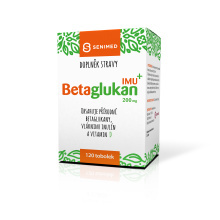 Betaglukan IMU 200 mg, se 150 mg inulinu a 5 µg vit.D, 120 tob.
Betaglukan IMU 200 mg, se 150 mg inulinu a 5 µg vit.D, 120 tob.
Distributor: SENIMED
Vyrobeno pro: Gynpharma -
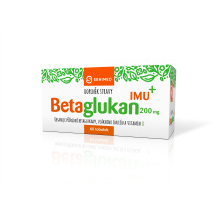 Betaglukan IMU 200 mg, se 150 mg inulinu a 5 µg vit.D , 60 tob.
Betaglukan IMU 200 mg, se 150 mg inulinu a 5 µg vit.D , 60 tob.
Distributor: SENIMED
Vyrobeno pro: Gynpharma -
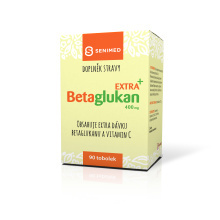 Betaglukan EXTRA 400 mg, se 40 mg vit.C , 90 tob.
Betaglukan EXTRA 400 mg, se 40 mg vit.C , 90 tob.
Distributor: SENIMED
Vyrobeno pro: Gynpharma -
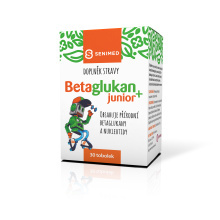 Betaglukan JUNIOR 100 mg s vit. C, zinkem a nukleotidy, 30 tob. Určeno pro děti a mladistvé.
Betaglukan JUNIOR 100 mg s vit. C, zinkem a nukleotidy, 30 tob. Určeno pro děti a mladistvé.
Distributor: SENIMED
Vyrobeno pro: Gynpharma -
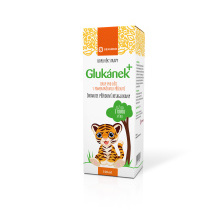 Glukánek sirup pro děti 150 ml, určeno od 1 roku věku, bez konzervačních látek
Glukánek sirup pro děti 150 ml, určeno od 1 roku věku, bez konzervačních látek
Distributor: SENIMED
Vyrobeno pro: Gynpharma